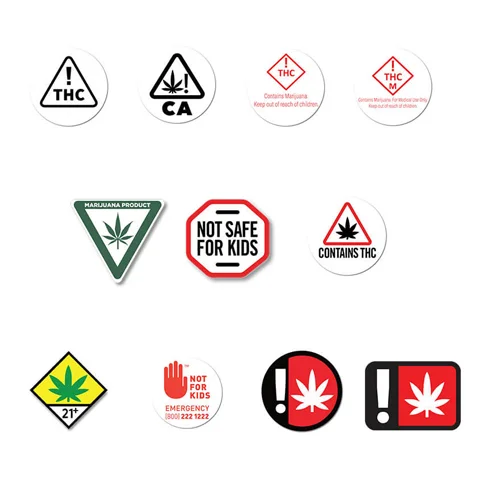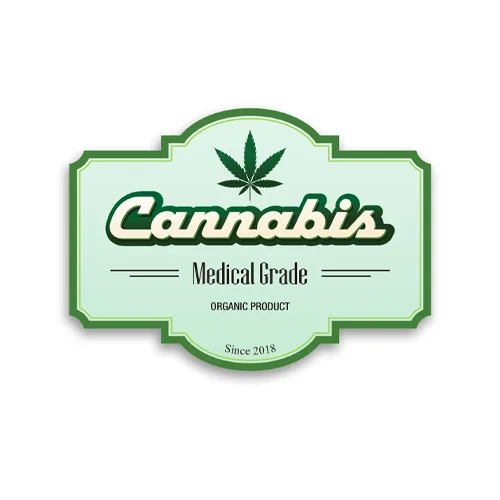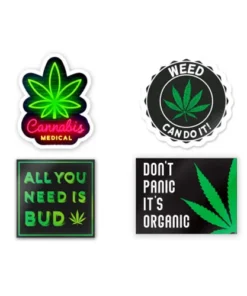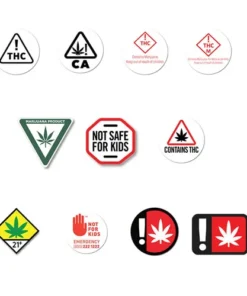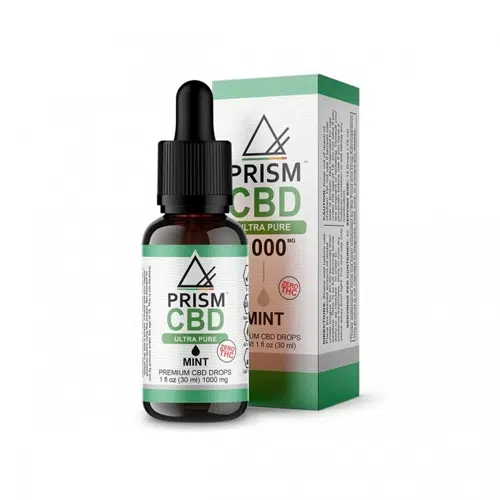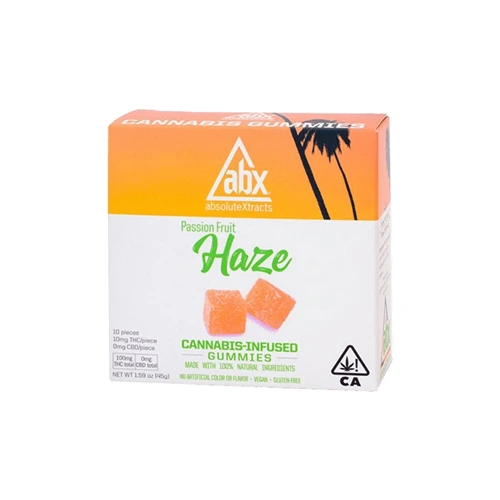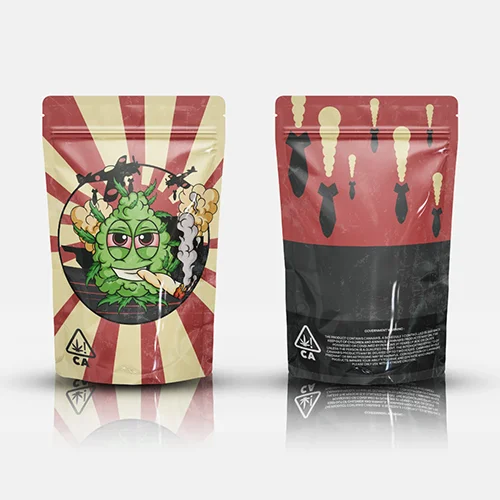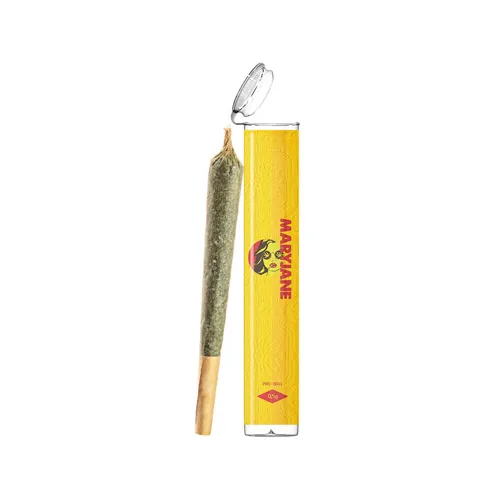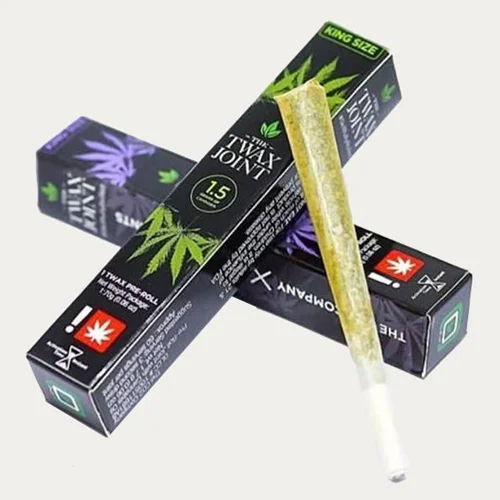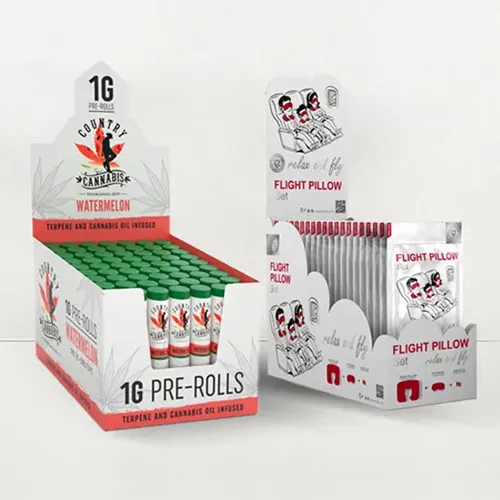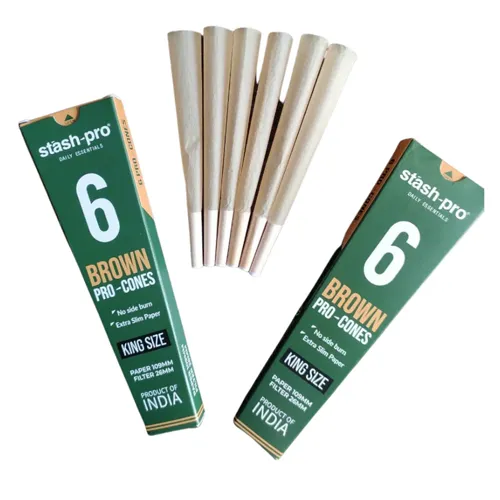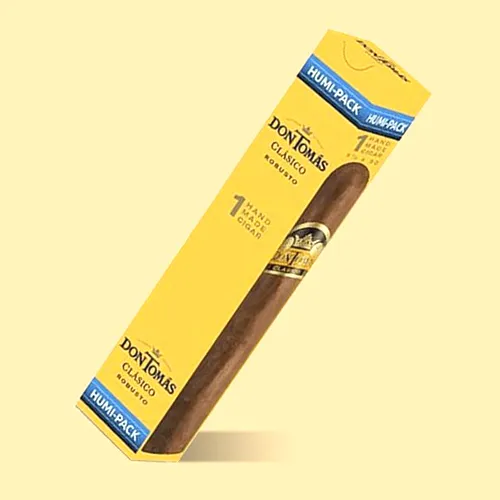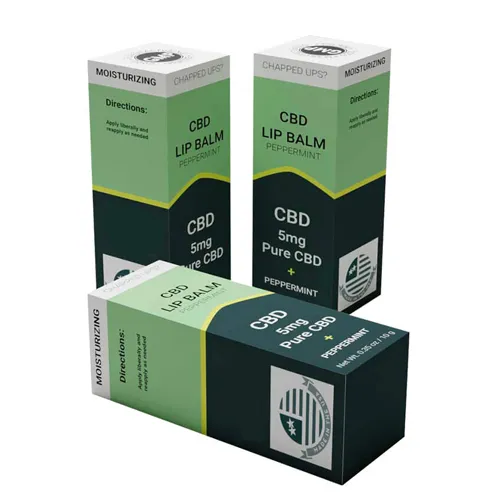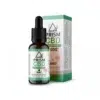The products with marijuana labels typically feature a clean, minimalist look with just the required branding, warnings, and cannabis information printed in black and white. Labels identify the product with the strain name, cannabinoid content, potency, net weight, etc. They also include any legally required warnings about use or keeping out of reach of children. Made from moisture-resistant materials suitable for freezer storage, cannabis labels adhere securely to packaging to communicate details and cautionary information to consumers.
FAQs
What materials should the marijuana labels be made from?
Marijuana product labels need to withstand moisture and freezing temperatures without fading, peeling or losing adhesion. Polyester and polyethylene are prime-label materials that remain vibrant and affixed in cold environments. Their synthetic durability prevents tearing or damage despite handling. Advanced top coats guard against wear, abrasions, oils and other contaminants. Waterproof adhesives bind labels firmly so critical product details don’t wash off.
Why are labels important for medical marijuana products?
The medical marijuana labels play an essential role in providing patient’s critical details like strain names, cannabinoid content, dosage guidelines, and warning information. This data empowers patients to understand a product’s intended uses along with risks, so they can make educated choices for their treatment needs and overall well-being. Clear, accurate labels also help prevent potential misuse while meeting legal requirements for medical cannabis.
What safety information should I find on medical marijuana labels?
Medical marijuana labels should highlight important safety details including any allergens like nuts or soy, along with proper storage guidelines to preserve potency. They should also warn pregnant or breastfeeding individuals about potential risks associated with use. Including this cautionary data ensures patients fully understand proper usage and how to minimize risks that could impact health and well-being.
What are custom marijuana labels, and why would I need them?
Products with custom marijuana labels provide an opportunity to incorporate your unique brand identity and product information through tailored design and high-quality printing. This contrasts generic, off-the-shelf labels lacking brand cohesion. Customization allows showcasing logos, strain names, graphics, colors, and other details that reflect your distinctive products and brand story.
Keeping Children Safe through Secure Marijuana Packaging
With the legalization of marijuana, stringent requirements for child-resistant (CR) packaging help keep products out of young hands.
CR cannabis packs utilize clever, complex opening mechanisms difficult for children under 5 to manipulate. Slide and shell box designs require coordinated pushing and sliding to access contents. Bottles often have push-and-turn caps combining pressing and twisting. Heat-sealed bags tear open only at a marked notch. Sealed blister packs need scissors to open. These frustrate kids while remaining convenient for adult consumers. By impeding access, CR packaging acts as a first line of defense restricting youth exposure to marijuana. Brands invest heavily in design testing and independent lab certification to guarantee CR effectiveness. Strict adherence to CR mandates across retail and medical cannabis demonstrates an ethical obligation to community well-being.
As the market expands, maintaining the highest safety standards through secured packaging keeps risks in check. Consumers can enjoy marijuana safely and responsibly knowing it’s packaged to protect even society’s most vulnerable members.
Difference between Medical and Recreational Cannabis Labeling
Product labeling for medical and recreational marijuana diverges based on intended consumer and use. Medical labels take a clinical approach, emphasizing vital details like active ingredients, therapeutic effects, and dosage guidance. The minimalist black-and-white design mimics prescription packaging, conveying seriousness. Labels are information-dense, educating patients to support informed usage. Recreational labeling adopts a more playful, promotional aesthetic with striking colors and bold graphics. Strain names and experiences take center stage. Content focuses on describing flavors, psychoactive qualities, and suggested activities. Some states still require warning messages on recreational products, but overall the tone aims to excite vs. inform. While medical patients need to manage their health, recreational users pursue enjoyment. This fundamental difference between wellness and recreation determines the divergent approaches to labeling cannabis products. Yet regardless of market, high-quality, consistent labeling remains imperative for a positive consumer experience.
If you need assistance determining the right labeling for your marijuana products, reach out to the labeling experts at CBD Boxes USA.


